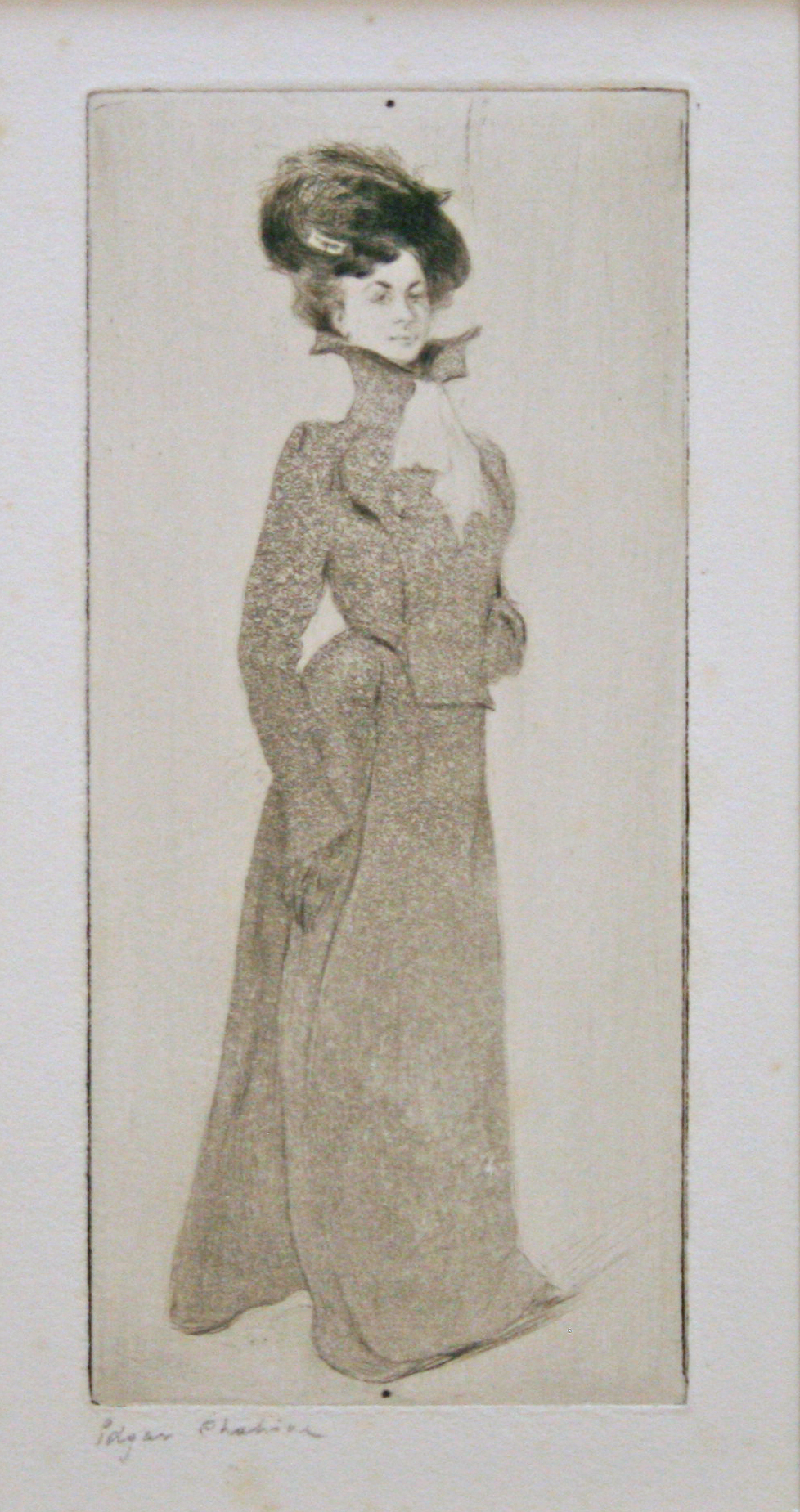Edgar Chahine was born in Venice to Armenian parents in 1874. He spent his youth in Constantinople, but traveled back to Venice as a young man, to study art at the Academia di Belle Arti under Paoletti. In the late 1890’s he began making intaglio prints or etchings, frequently mixing media in order to achieve the desired effects. Chahine was considered a superb technician and mastered the techniques of etching, aquatint and drypoint.
Edgar Chahine was born in Venice to Armenian parents in 1874. He spent his youth in Constantinople, but traveled back to Venice as a young man, to study art at the Academia di Belle Arti under Paoletti. In the late 1890’s he began making intaglio prints or etchings, frequently mixing media in order to achieve the desired effects. Chahine was considered a superb technician and mastered the techniques of etching, aquatint and drypoint.
Edgar Chahine moved to Paris in 1895, to study at the Academie Julian but also considered himself to be a “student of the street.” Like a photojournalist, he loved to document the traffic and the people in Paris and he seemed to approach his subjects with an honest selective eye and was neither patronizing nor sentimental in his interpretation of the life around him.
Chahine received encouragement from Edmond Sagot, a well-known art dealer and publisher from Paris and Eugene Delatre, a superbly skilled printer, regarding his printmaking. Shortly thereafter, Sagot became his dealer and publisher. Eugene Delatre gave Chahine instructions in printmaking and together, they developed a two-plate system of color printmaking for his work. The first plate carried the basic outline and tonal qualities of the composition and the second plate carried the color or the aquatint.
During his lifetime, Chahine created over four hundred etched images. However, his most important works were completed in the first decade of the twentieth century, when he explored the themes of elegant Parisians, circus performers, impoverished street people and hard-working street vendors.


